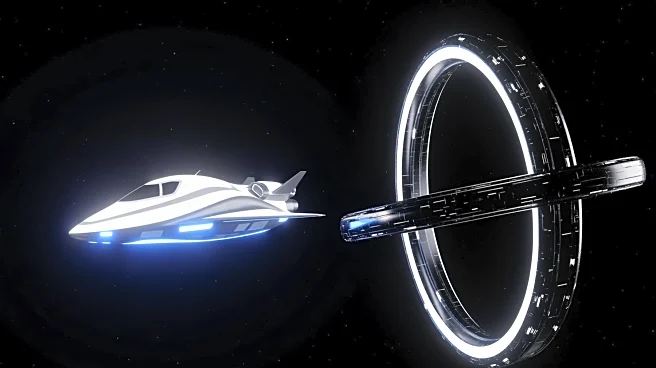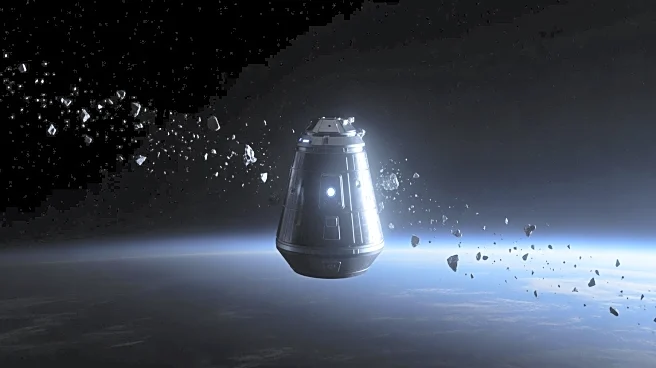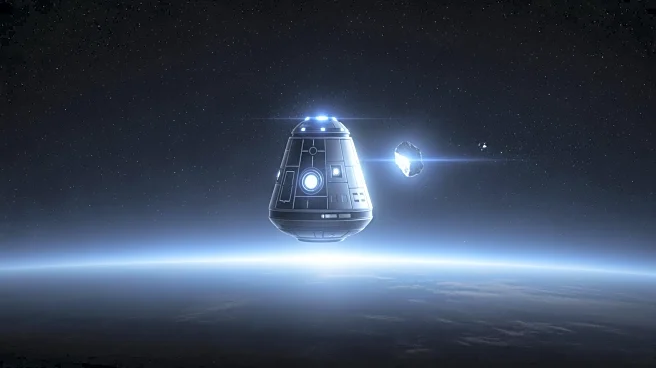What's Happening?
China is set to launch the Shenzhou 22 spacecraft from the Jiuquan Satellite Launch Center, aiming to provide a lifeboat for three astronauts currently stranded at the Tiangong space station. The launch,
scheduled for November 25, 2025, will utilize a Long March 2F/G rocket. The astronauts, who arrived at the station on October 31, have been without a return vehicle since the Shenzhou 20 spacecraft was damaged by space debris. The Shenzhou 21 spacecraft, which brought the current crew, was repurposed to return the previous crew, leaving the current astronauts without a means to return. The Shenzhou 22 mission is crucial to ensure the safety and continuity of operations at the Tiangong space station.
Why It's Important?
The launch of Shenzhou 22 is significant for China's space program, highlighting its commitment to maintaining a continuous human presence in space. The mission underscores the challenges of space debris and the importance of having contingency plans for crew safety. It also reflects China's growing capabilities in space exploration and its strategic interest in expanding its influence in space. The successful execution of this mission could bolster China's reputation in the international space community and pave the way for future missions, including the planned arrival of Shenzhou 23 in April 2026.
What's Next?
Following the launch, the Shenzhou 22 spacecraft is expected to dock with the Tiangong space station, providing the stranded astronauts with a means to return to Earth. The current crew will continue their mission until relieved by the Shenzhou 23 crew. The damaged Shenzhou 20 spacecraft remains docked at the station and will need to be addressed to free up docking space for future missions. China's space agency will likely continue to monitor and mitigate the risks posed by space debris to ensure the safety of its astronauts.











